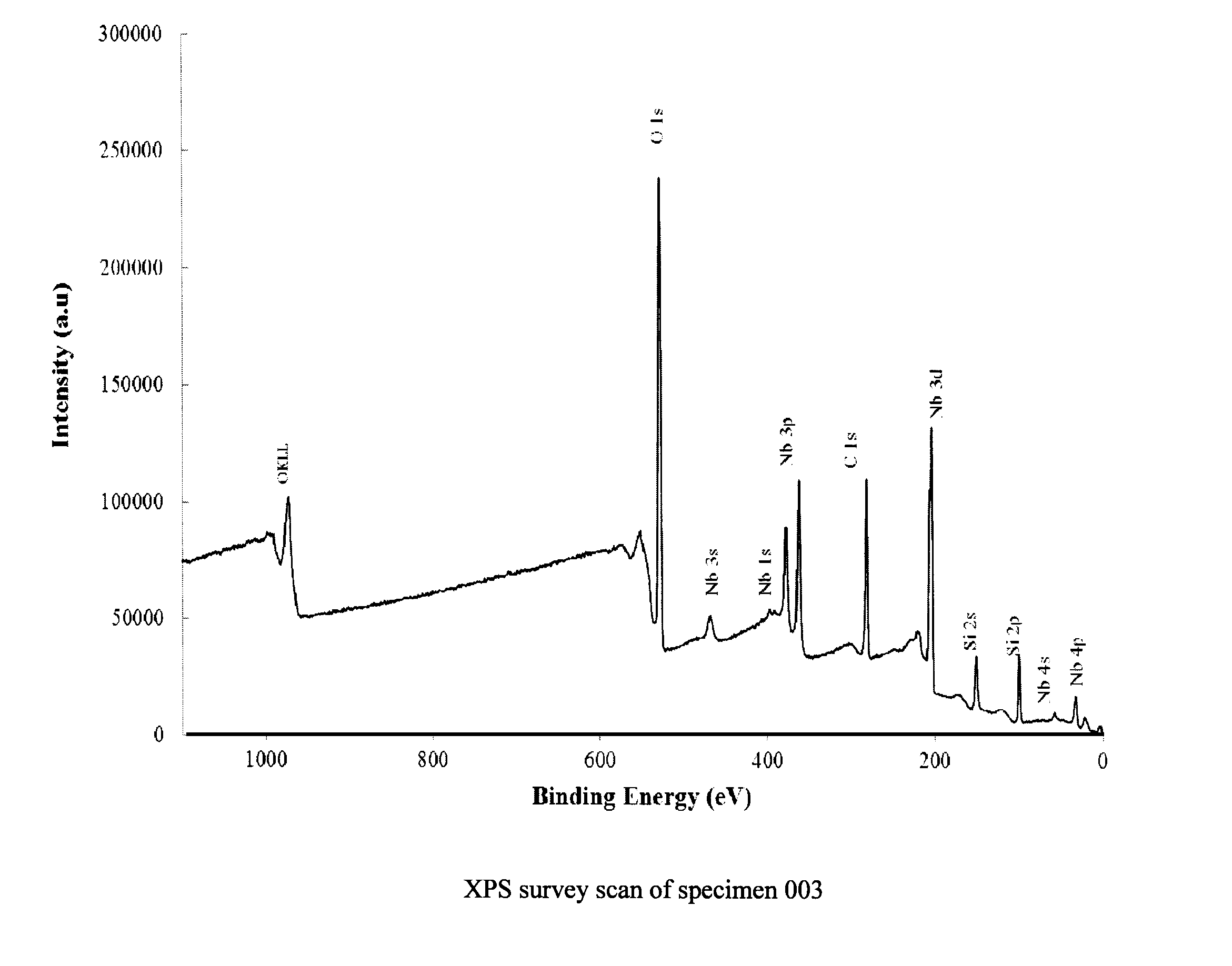Anti-fouling surface, and radiation source assembly and fluid treatment system comprising same
a technology of radiation source and fluid treatment system, which is applied in the field of anti-fouling surface, can solve the problems of affecting the ability of the fluid to transmit uv radiation, affecting the efficiency of the fluid treatment system, and the cost of cleaning the sleeves about the radiation source, so as to reduce the frequency of mechanical cleaning, reduce the rate of accumulation of fouling on the surface, and reduce the effect of surface acidity
- Summary
- Abstract
- Description
- Claims
- Application Information
AI Technical Summary
Benefits of technology
Problems solved by technology
Method used
Image
Examples
example 1
Preparation Of An Acid Functionalized Quartz Surface
[0122]Two coupons (1 inch×1 inch×1 mm) made of GE 214 quartz (fused silica) (Pelco International, p / n 26013) were chemically cleaned by immersion in toluene for 20 minutes in a manner that exposed both major surfaces to the fluid. The specimens were then rinsed with anhydrous 2-propanol and dried. The specimens were similarly immersed in hydrochloric acid, 10% (v / v) for 20 minutes and subsequently rinsed with deionised water and then with 2-propanol. The specimens were then immersed in toluene again for 20 minutes and subsequently rinsed thoroughly with 2-propanol.
[0123]The specimens were then immobilized in a reactor and activated at 120° C. for 2 hours in the presence of air (ultra zero gas) flowing over the specimens. After the reaction was completed, the reactor was cooled to room temperature, isolated and transferred into a glove box without exposing the specimens to the ambient. The glove box was purged several times using ul...
example 2
Fouling Study In A Laboratory Apparatus
[0127]Six research specimens consisting of GE214 quartz coupons were acid functionalized as described in example 1 in a manner yielding highly dispersed niobium oxide nanoparticles over the quartz surface with overlayer thicknesses of approximately 1 nm. Four untreated but chemically cleaned quartz coupons were used as control specimens. The UV transmittance (UVT) of monochromatic light of 254 nm was measured at 20 locations through all 10 specimens using a Varian Cary 100 UV-Visible (UV-Vis) spectrophotometer equipped with an integrating sphere (Labsphere, North Sutton, N.H., USA). The 10 specimens were subsequently immobilized within 10 individual flow cells with calming zones of 20 hydraulic diameters upstream and 10 hydraulic diameters downstream of the quartz specimens, to ensure fully developed turbulent flow through the duct of the flow cell.
[0128]The specimens were exposed to a proprietary synthetic fouling water at a Reynolds number of...
PUM
| Property | Measurement | Unit |
|---|---|---|
| thickness | aaaaa | aaaaa |
| thick | aaaaa | aaaaa |
| temperature | aaaaa | aaaaa |
Abstract
Description
Claims
Application Information
 Login to View More
Login to View More - R&D
- Intellectual Property
- Life Sciences
- Materials
- Tech Scout
- Unparalleled Data Quality
- Higher Quality Content
- 60% Fewer Hallucinations
Browse by: Latest US Patents, China's latest patents, Technical Efficacy Thesaurus, Application Domain, Technology Topic, Popular Technical Reports.
© 2025 PatSnap. All rights reserved.Legal|Privacy policy|Modern Slavery Act Transparency Statement|Sitemap|About US| Contact US: help@patsnap.com



